#Nepal Health Facts Sheet
Explore tagged Tumblr posts
Text
Nutrition Rehabilitation Home Service Sites
Nutrition Rehabilitation Home (NRH) provide facility-based management of severe acute malnutrition integrated with hospital services with nutrition education and counselling to the guardians/parents for the management of moderate acute malnutrition as well as good nutrition and health care practices for their children. S.NO.FacilityProvinceDistrictLocal Level1JANAKPUR PROVINCIAL HOSPITALMadesh…

View On WordPress
#Food Security and Nutrition#Health in Data#Nepal Health Facts Sheet#Nutrition Friendly Local Level#Nutrition Rehabilitation Home#Nutrition Rehabilitation Home Service Sites#Public Health#Public Health Update
0 notes
Text
MBBS in Nepal
Studying MBBS in Nepal is an incredible destination to pursue an MBBS degree. Nepal is multi-ethnic, multi-lingual, multi-religious and multi-cultural and is located in the lap of the Himalayas. Nepal is home to mountains in fact eight of the world’s ten tallest mountains including Mount Everest, the highest point on the earth. Kathmandu is Nepal’s capital and the largest city and Nepali is the official language Nepal is the most ideal destination to study MBBS for Indian students because both countries are neighbours. The political relationship between India and Nepal is good, it adds extra benefits to students. MBBS in Nepal for Indian students is a golden opportunity due to its quality education. Also, Indian students don't need a visa document to study MBBS in Nepal. MBBS in Nepal without NEET is not possible. You need to qualify National Eligibility cum Entrance Test (NEET). Apart from this, there is no need to qualify for any extra exam like TOEFL or USMLE. MBBS in Nepal for Indian students' fee structure is affordable compared to European medical colleges. Living costs are low for international students. Nepal is a very safe country for international students. Indian students can easily come back home from Nepal for any necessary work or on vacation, all types of Transport facilities are available every day between Nepal and India like buses, trains and aeroplanes. The top medical universities in Nepal have been recognised by the different medical bodies of the world such as the National Medical Commission (NMC), World Health Organization (WHO), UNESCO, ECFMG, FAIMER, etc. Medical degrees awarded by Nepal’s medical universities are recognised globally.
Advantages of Studying MBBS in Nepal
❖ Many Indian students study various medical courses in Nepal.
❖ The admission process is hassle-free in medical colleges in Nepal, IELTS & TOEFL exams are not required for admission only students need to qualify NEET examination
❖ The cost of MBBS in Nepal is affordable, MBBS Tuition fees are low here compared to Indian private medical colleges for MBBS courses
❖ Hostel fees are reasonable and shared hostels are available on campus. Separate hostels facility is available for girls for better privacy
❖ Most of the medical colleges of Nepal are approved by top medical organizations such as NMC & WHO.
❖ Medical Universities provide globally recognised medical degrees that open several carrier options for medical graduates.
❖ Advanced research centres, well-equipped laboratories and the latest medical instruments are available for better clinical studies.
❖ Medical colleges in Nepal are known for their quality education both in theoretical studies and practical learning.
❖ Nepal shares a similar culture with India, which makes it easier for Indian students to adjust to the local culture and lifestyle. Also, the majority of the population in Nepal speaks Hindi, which is the language spoken widely in India.
❖ MBBS in Nepal is a perfect option for bright students who want to study medical education at an affordable cost without compromising on the quality of education
Eligibility Criteria for Admission to Nepal
Below have mentioned all the important details of the eligibility criteria that you must fulfil to study
❖ You should have an aggregate of 50% for General category candidates and 45% for Reserved category candidates in 12th standard with Physics, Chemistry and Biology
❖ The age should be 17.5 years at the time of admission and the maximum age limit is 25.
❖ It is compulsory for Indian students to clear the National Eligibility Cum Entrance Test (NEET-UG) exam conducted by the National Testing Agency (NTA).
❖ The student must have a valid Visa & Passport and Indian Nationality Certificate.
Documents Required
Students should keep the following list of the documents that are required to be admitted to reputed government medical colleges in Nepal:
❖ 10th mark sheet
❖ 12th mark sheet
❖ NEET Score Card
❖ 10 Passport size photos
❖ Health insurance
Top medical colleges in Nepal
Some of the top medical colleges in Nepal are mentioned below:
B. P. Koirala Institute of Health Sciences
B.P. Koirala Institute of Health Sciences was named after Bisheshwar Prasad Koirala, a famous political leader of Nepal. It is one of Nepal’s leading and most popular medical institutes. It was established in 1993 and is located in Dharan in Sunsari District, Nepal. It is placed among the top ten medical colleges in Nepal.
Kathmandu Medical College
Kathmandu Medical College is one of the oldest and top-ranked medical colleges in Nepal. It is affiliated with Kathmandu University and approved by top international & Indian medical bodies such as the National Medical Commission (NMC), World Health Organization (WHO), and many more. It was founded in 1997.
KIST Medical College
KIST Medical College is a leading medical college in Nepal. The college was established in 2006 and is located in the Lalitpur district of Nepal. It is affiliated with Tribhuvan University and recognised by National Medical Commission (NMC), World Health Organization (WHO), UNESCO, EFMG, FAIMER, etc.
Institute of Medicine
The Institute of Medicine is one of Nepal’s oldest & reputed medical institutes. It was established in 1972 in Nepal’s capital Kathmandu. It is affiliated with Tribhuvan University and is approved by top international, European and Indian medical or educational organizations. MBBS course duration is six years including an internship and the teaching medium is English at the Institute of Medicine.
Manipal College of Medical Science
SManipal College of Medical Science is affiliated with Kathmandu University. It was established in 1994 and is located in Pokhara, Nepal. The college is very popular among international students due to its excellent quality education & practical learning. Most of the medical colleges in Nepal provide globally recognised medical degrees
Curriculum and teaching methods
MBBS course duration is 6 years including a one-year rotating internship program in Nepal’s medical universities. Following is the semester-wise syllabus for MBBS at the medical Universities of Nepal: 1st Year 2nd Year 3rd Year Anatomy Haematology Neuroanatomy Physiology Immunology Neurophysiology Medical Genetics Biophysics Behavioral Medicine Biochemistry Biochemistry Pharmacology Molecular Biology Introduction to Public Health Pathology Histology & Embryology Clinical & Professional Skills III Introduction to clinical diagnostics II Cardiovascular & Respiratory Systems Endocrine Physical Diagnosis History of Medicine Renal & Reproductive Systems Clinical Skills Clinical & Professional Skills I Nanomedicine Medical Management Clinical & Professional Skills II Philosophy -- 4th Year 5th Year 6th Year Internal Medicine clerkship Internal Medicine Obstetrics/Gynecology Pulmonology Clinical Immunology Family Medicine III Nephrology Dermatology Paediatrics Urology Stomatology Narcology General Surgery Ophthalmology Clinical Practi System Biology Emergency Medicine Palliative care clerkship Hepatology Infectious Diseases -- Family Medicine Rehabilitation Medicine -- Clinical radiology Forensic Medicine -- Laboratory Medicine Medical Toxicology --
The teaching medium is English for the MBBS courses in Nepal. International students from all over the globe study various medical courses in Nepal. Teaching in English makes it easier for students to understand the syllabus of MBBS and they continue their studies well.
Clinical exposure and practical training
Clinical exposure and practical training are as important as theoretical studies. Practical training provides students with hands-on experience in various medical fields and Clinical exposure offers students a real-life situation in hospitals. In an internship, students are assigned to work alongside professional doctors & nursing staff. It helps to develop clinical skills in students. Also, it includes training in procedures such as taking a patient's history and physical examination, administering medications, interpreting lab results, and performing minor surgical procedures Clinical exposure and practical training instilled a sense of responsibility among the students. They are critical components of MBBS education that provide students with the skills and experience necessary to succeed in their future medical careers. MBBS in Nepal for Indian students is a golden opportunity if you are interested in Clinical exposure and practical training
MBBS in Nepal Fee Structure
If you want to study MBBS at a low cost without compromising on quality education, then Nepal is the best place for you. MBBS in Nepal fees is quite reasonable compared to other countries' medical colleges. In India, the cost of studying MBBS is very high. There is a lot of difficulty in getting entry into the government medical college due to limited medical seats, MBBS in Nepal for Indian students fee structure is affordable. The cost of MBBS in Nepal is approximately between 45-60 lakh
MBBS in Nepal fees in Indian rupees for Indian students:
Colleges Name Tuition Fees (Year) Hostel Fees (Year) KIST Medical College ₹ 42,00,000/- ₹ 6,00,000/- Institute of Medicine, Kathmandu ₹ 38,50,000/- ₹ 6,60,000/- B.P. Koirala Institute of Health Sciences ₹ 48,00,000/- ₹ 6,60,000/- Kathmandu University ₹ 55,00,000/- ₹ 6,00,000/- Manipal Medical Collegey ₹ 50,00,000/- ₹ 6,60,000/- Nepalgunj Medical College ₹ 60,00,000/- ₹ 6,00,000/- Birat Medical College ₹ 53,00,000/- ₹ 6,00,000/-
Scholarships and financial aid options
Though the talks of an MBBS study bring joy, hope and passion, the barriers between your MBBS dream and the reality of affording MBBS fees are high. Studying in Nepal is a top choice for international students aiming to study abroad, owing to the high-quality medical education offered. The government of Nepal are bringing bright students from across the globe to Nepal by offering various scholarships for international students to study higher education.
Accommodation and living expenses
❖ Medical colleges in Nepal provide all the necessary facilities to students
❖ The medical college has a canteen facility on campus
❖ Indian foods are easily available in Nepal, in fact, all the vegetables of India are available there.
❖ Separate hostels are available on the campuses of the university
❖ Local guardians are available in the hostels
❖ Nepal medical universities are safe for international students. Safety is one of the topmost priorities of the University and the campus is under CCTV surveillance 24*7
❖ Also, Security guards are available in the medical colleges
❖ Living cost is low in Nepal. Students can live outside the college campus in private flats or rented rooms.
❖ Library, conference hall, and well-maintained rooms are available in major medical universities of Kyrgyzstan.
❖ Seminars, cultural events and sports tournaments are organised on the campus.
Career opportunities after completing MBBS in Nepal
There are several career options for medical students pursuing MBBS from Nepal. After completing of MBBS from an eminent medical college in Nepal, here are some of the popular career options for students:
❖ Students can study PG courses like MD/MS in top countries of the world such as the USA, Germany, U.K, Canada, Russia and many more.
❖ Students can choose Hospital management as their career.
❖ Students can open their own clinics or hospitals for practice in Nepal. For getting an Indian medical licence students need to clear the National Exit Test NEXT exam.
❖ Students can practice as a doctor in a popular hospital in Nepal or any other major country.
❖ Also, Students can work as medical advisors, clinical research associates, or drug safety specialists.
❖ After completing MBBS in Nepal, students can pursue post-graduation or specialization in various medical fields such as Cardiology, Neurology, Gynecology, Dermatology, Pediatrics, Orthopedics, and many more.
Conclusion: Is studying MBBS in Nepal worth it?
In conclusion, whether studying MBBS in Nepal is worth it or not depends on your individual goals and circumstances. If you are willing to work hard and make the most of the opportunities available, then studying MBBS in Nepal could be a good choice for you. However, if you are looking for the latest medical facilities and technologies, you may want to consider studying in a different country. MBBS in Nepal's cost of education compared to other countries like Russia, Georgia, France, Italy, the US, Canada, and the UK, etc
#MBBS in Nepal#mbbs in nepal for indian students#mbbs admission in nepal for indian students#mbbs college in nepal#mbbs fee structure in nepal
0 notes
Text
WWF-Climate Change And Affects On Animals
Facts/Opinions/Information that can be used for my idea a generation

WHAT IS CLIMATE CHANGE?
The science is clear. Climate change is real. Climate change is happening now. Climate change is in need of immediate and ambitious action to prevent the worst effects it can have on people and wildlife all over the world.
We know that the planet has warmed by an average of nearly 1°C in the past century. If we are to prevent the worst effects of climate change, there is global agreement that temperature rises need to be kept well below 2°C from the pre-industrial era, with an ambition to keep it below 1.5°C. Currently, however, assessments suggest that we are currently on course for temperature rises of up to as much as 4°C or higher.
We have recently seen a number of unwanted developments:
-16 of the 17 warmest years on record have occurred since 2001, with 2016 being the warmest yet.
-The current levels of atmospheric concentrations of greenhouse gases are unprecedented in the last 800,000 years.
-And recently, scientists have declared a new geological time period: the Anthropocene, in which human activity is said to be the dominant influence on the environment, climate, and ecology the earth.
-As the planet continues to warm, climate patterns change. Extreme and unpredictable weather will become more common across the world as climate patterns change, with some places being hotter, some places being wetter, and some places being drier. These changes can have (and are already having) huge impacts on all life on Earth.
Climate change poses a basic threat to the places, species and people’s livelihoods WWF works to protect. To adequately address this crisis we must quickly reduce carbon pollution and prepare for the consequences of global warming, which we are already experiencing. WWF works to:
-Advance policies to fight climate change
-Engage with businesses to reduce carbon emissions
-Help people and nature adapt to a changing climate.
Humans and wild animals face new challenges for survival because of climate change. More frequent and intense drought, storms, heat waves, rising sea levels, melting glaciers and warming oceans can directly harm animals, destroy the places they live, and wreak havoc on people’s livelihoods and communities.

WHAT CAUSES CLIMATE CHANGE?
-Burning fossil fuels
-Breeding cattle and cutting down forest
-Trapped carbon dioxide
HOW HOT CAN IT GET?
A rise of just 2°c would mean:
-Severe storms and floods in many countries, particularly impacting coastal areas, with droughts also affecting many parts of the world
-Seas become more acidic, coral and krill die, food chains are destroyed
-Little or no Arctic sea ice in summer – which not only means less habitat for polar bears, but also means the global climate warms faster, as there is less polar ice to reflect sunlight
Beyond 2°c:
-Rainforests dying
-Unthinkable loss of ancient ice sheets of Greenland and Antarctica, causing dramatic sea level rises
-Mass displacement of people and widespread species loss and extinction
That’s why we must act now.
Some people might try to tell you that global warming is natural, or that the Earth is actually cooling. Or they might suggest there’s nothing we can do. But here’s what the science tells us:
TEMPERATURES ARE RISING FASTER THAN EVER:
Yes, the Earth’s climate has always changed, with temperatures rising and falling over thousands of years. But now, it’s happening now at a far faster rate than ever before, giving people and wildlife very little time to react and adapt.

Climate Stripes
GLOBAL WARMING IS MAN-MADE:
There is overwhelming evidence (97% scientific consensus) that global warming is mostly man-made – largely down to burning fossil fuels and deforestation on a mass-scale. This is not a natural process, no matter how much climate change deniers may claim it is.
The good news? We can do something about it. But we have to do it together, and we have to do it now.
ADAPTING TO CLIMATE CHANGE
To avoid the worst effects of climate change, we need to hugely reduce global carbon emissions. But we must also prepare for the serious and unavoidable consequences of carbon emissions such as increasing temperatures, shifting precipitaton patterns, ocean acidification, sea level rise and the increasing intensity and frequency of extreme weather events. WWF works with local communities, governments and others around the world to help nature and people prepare for the many impacts of a changing climate. To do this they:
-Increase resilience of communities in Nepal by promoting new farming techniques, community weather monitoring and creating seed banks
-Restore beach vegetation to shade marine turtle nests in the Caribbean
-Secure access to fresh water for elephants in Thailand during periods of drought
-Identify areas where polar bears can live on solid Arctic sea ice for decades to come

PROTECTING FORESTS
Forests are home to many of the world’s most endangered wildlife. They also protect the planet by absorbing carbon dioxide (CO2), a major source of pollution that causes climate change. WWF fights climate change by saving forests. To do this they:
-Ensure that global climate change agreements reduce forest destruction and degradation and protect wildlife
-Work directly with countries, especially developing ones, to protect forests and benefit the livelihoods of local communities
-Use satellite images and aerial mapping technologies to track illegal logging
-Study the vulnerability of forests to climate change and explore ways to help them adapt.
INFLUENCING POLICY
Government must play a main role to tackle the climate crisis. WWF is an advocate at all levels of government. In the United States, WWF works to advance policies that reduce carbon pollution, support clean energy technologies, prepare for the effects of climate change, and curb deforestation. At international negotiations, WWF encourages the United States to play a important role in developing global climate agreements that:
-Substantially reduce carbon pollution to avoid the worst consequences of climate change
-Provide financial support to developing countries so people and nature can successfully adapt
-Combat forest destruction and protect wildlife that live there
-Help transition developing countries to clean energy sources like wind and solar
ENGAGING BUSINESS
Businesses have a responsibility to reduce their contribution to climate change. WWF works in partnership with companies as part of WWF’s Climate Savers Program to set and meet goals to reduce carbon emissions, advance projects to protect their resources from climate impacts, and ensure the sustainability of their core business.
The Earth's atmosphere is warming, faster than it probably ever has. In some cases weather patterns, climates and natural environments are changing quicker than wildlife or people can adapt.
So many of the world's biggest challenges, from poverty to wildlife extinction, are made more difficult by climate change. And things will get worse if we do nothing. But we can do something about it.
"As environmental problems go, few are as big and complex as climate change – it is a fascinating and important issue to work on. Climate change is one of the biggest threats faced by our natural world and also a tough social and economic issue. It is something we can’t leave to future generations to clean up. I work with a great team in the UK and internationally to press policy-makers to make bold decisions, such as the UNFCCC Paris Agreement in 2015, and to embed climate risk in our conservation efforts." Stephen Cornelius-Chief adviser for climate change

GLOBAL WARMING
Global temperatures have been rising for over a century, speeding up in the last few years, and are now the highest on record. This causes negative impacts such as the melting of Arctic sea-ice, prolonged heat-waves and rising sea-levels.
We know why. We release carbon dioxide into the atmosphere by burning fossil fuels for energy, farming, and destroying forests. These carbon emissions are causing the greenhouse effect, trapping heat and making the Earth warmer, faster than could happen naturally.
We know what needs to be done about it. We need to cut man-made greenhouse gas emissions drastically, phase out fossil fuels and move to renewable energy. We need to use less energy and be more efficient in the energy that we do use, and we need to tackle deforestation and eat less meat. For example a vegan lifestyle would not be beneficial for your health but for the planet and the animal’s.

PLACES AFFECTED BY CLIMATE CHANGE
From fragile mangrove swamps in India to the fast-decreasing icy wilderness of the Arctic to the vast oceans, the delicate balance of life in precious places all over the world is being put under stress.

HOW IS WWF TACKLING CLIMATE CHANGE
“We're working with government bring forward policies to reduce UK emissions in line with International targets and with businesses to reduce their impact and emissions. We're working to increase renewable energy use, including offshore wind farms particularly around the Scottish coast and on international policy to limit emissions from the aviation industry.
Our world is changing faster than anyone predicted. Already, freshwater supplies are shrinking, agricultural yields are dropping, our forests are burning, and rising oceans are more acidic—all, in part, due to a warming climate. As our natural world changes around us, so does our way of life. Coastal home values drop as insurance premiums rise; drought reduces feed for American farmers’ cattle and water for their crops; more pollen and dust in the air aggravates asthma and allergies in kids and adults alike.
Achieving this future will require action by everyone, and we are already well on our way. People are using their collective voices to demand change. Businesses are making investments in clean energy, already creating local jobs and stronger economies. Communities are redesigning their roads, buildings, airports, and railroads to make them climate resilient. And nations around the world are committed to delivering on a landmark global plan to curb climate change, known as the Paris Agreement.”
For decades, WWF has engaged with millions of Americans, leading businesses, and government leaders to prepare for unavoidable change and reduce the emissions that drive climate change.
Climate change is already having an impact on wild animals around the globe. Changes in climate are altering the timing of life cycles, causing species to shift where they live, and in some cases even leading to extinction. We can help species adapt to our changing world by ensuring that our own responses to climate change factor in the health and wellbeing of the habitat and resources on which they depend.
Changes in climate and extreme weather events have already begun to affect biodiversity across the globe. And climate change also worsens other threats like habitat destruction, overexploitation, and disease.
From the shrinking habitat of the polar bear to increased water scarcity driving human-wildlife conflict, these changes will become more pronounced in years to come.
WWF is working to better understand how a changing climate impacts wildlife, and developing and implementing adaptation solutions. WWF are assessing thier priority species to determine traits that make them strong or vulnerable to changes in climate, crowdsourcing data on climate impacts, and funding projects through our Wildlife Adaptation Innovation Fund.
Climate change-related threats to biodiversity are not decades, or even years, away. In recent assessments, the International Union for Conservation of Nature (IUCN) emphasized the alarming impact of climate change on species right now: shorttail nurse sharks are threatened due to coral reef bleaching and degradation; imperial parrot habitats are being destroyed by increasingly violent hurricanes; and many Australian freshwater fish species are in danger from extreme droughts caused by declining rainfall.
As habitats change, extreme weather events increase, and temperatures rise.
Forests are nature’s greatest technology for combating climate change: they naturally absorb carbon dioxide (CO2), reducing the amount of this heat-trapping gas in our atmosphere. When forests are not managed responsibly, they release large quantities of C02 into the atmosphere. Deforestation and degradation are the largest sources of C02 emissions after the burning of fossil fuels. Scientists estimate up to 13% of global carbon emissions come from deforestation.

WHY IS CLIMATE CHANGING, CAN WE FIGHT IT?
Climate change is certainly the biggest challenge facing humanity, however there is still time to fix it.
The first thing to do is make clear that climate change is a consequence of human interference. This fact has been confirmed by the Intergovernmental Panel on Climate Change (IPCC) and the Nobel Foundation in Sweden, who is in charge of awarding the Nobel prizes.
Each year we release almost 30 billion tons of CO2 into the atmosphere, as a result of the burning of fossil fuels like oil, natural gas and coal.
The main sectors responsible for fossil fuel consumption and CO2 pollution in the atmosphere are:
• Electric power generation
• Transportation
• Industry
• Households
Not only politicians and world leaders must take action everything we do in our everyday lives to tackle climate change, matters.

IF CLIMATE CHANGE DOESN’T STOP,WOULD WE BE ABLE TO ADAPT?
WWF's top concert is to mitigate climate change.
“We are optimistic and believe that we can stop CO2 emissions in order to minimize the effects of global warming and avoid the dangerous increase of 2 °C.
We believe that we are able to maintain the impact of climate change within tolerance levels.”
The truth is that climate change is a reality we are already living, and that it is affecting nature and humanity all over the world. Extreme weather, torrential rains and tsunamis harm biodiversity by threatening valuable ecosystems.
Therefore, we have many decades of hard work, risks and great amounts of investment for nature conservation and development of a sustainable future ahead.
Most of the poor suffer because they live in exposed regions where they have no way to protect themselves or face up to the challenges produced by natural disasters.
Therefore,rather than just strengthen prevention abilities to anticipate future negative scenarios, WWF also promotes recovery based on conservation.
WWF concentrates its efforts on understanding the impact of climate change on tropical forests, the Arctic glaciers and coral reefs in order to develop conservation strategies for the recovery of threatened ecosystems and communities.
WWF designs recovery based on conservation by means of tools that help control pollution, prevent loss of habitats and establish protected natural areas.
Only quick action to reduce CO2 emissions will bring a long-term solution to the problem of climate change.
WHAT CAN DO YOU TOGETHER WITH WWF,COMPANIES and COMMUNITIES ?

We can help in every possible way to address this global problem.
As an organization, WWF works to keep global warming in its current state and prevent global temperature from increasing by 2 °C. This would be very dangerous because climate change would reach uncontrollable proportions.
WWF offers solutions to climate change. They suggest a vision of energy use which, by 2050, allows us to reduce global CO2 emissions by 80%, and therefore avoid that dreaded increase of 2 °C in global temperature
6 points have been recognised to address the challenge of meeting energy demand so as not to damage global climate.
• Improve energy efficiency.
• Halting deforestation.
• Accelerating the development of clean technologies.
• Developing flexible fuels.
• Replacing coal with natural gas.
• Equipping fossil fuel plants with carbon capture technology.
0 notes
Text
Ball returns to the splendid Salle Empire
The mythical Salle Empire of the Hotel de Paris, in the heart of Monte-Carlo, will host the 14th edition of the glamorous Christmas Ball, on Saturday, December 14, 2019, organized by Sandrine Knoell-Garbagnati of 5 Stars Events, under the High Patronage of H.S.H. Princess Charlene of Monaco.
This enchanting Ball, under the theme of Fellini’s La Dolce Vita, is the highlight of the season festivities in the Principality, with the privileged guests adding to the appeal and spirit of the holidays’ celebration. The Ball is supported by: AKILLIS jeweler, Monika Bacardi Lady of Bayfield Hall, and Hello Monaco; with the participation of Victoria la Dolce Vita Proseco, Poggio Dimadis, ArtSGK and florist Narmino-Sorasio.
Sandrine, who founded the Ball in 2005, counts with the valuable collaboration of loyal friends who are longtime members of the Christmas Ball’s International Action Committee: Princess Camilla of BOURBON TWO-SICILIES, Lady Monika del CAMPO OF BAYFIELD HALL, Ekaterina BUTORINA, Marquise Roberta GILARDI SESTITO, Elisa GIUSTI, Inna MAIER, Elisabeth WESSEL, Celina LAFUENTE de LAVOTHA, Anne BLACK, Donatella CAMPIONI, Lene GIANNI, and Kareen S. MAHTANI.
2014 Christmas Ball – Sandrine Garbagnati, Celina Lafuente de Lavotha, HSH Prince Albert II of Monaco and Donatella Campioni
2013 Christmas Ball – Sarah Marshall, Elisa Giusti, Celina Lafuente de Lavotha, Monika del Campo Bacardi, Victoria Silvstedt, Federica Moro, Sandrine Garbagnati-Knoell, Inna Maier, Polina Butorina and Tina Zegg
2015 Christmas Ball – Ekatarina Butorina, Celina Lafuente de Lavotha, Elisa Giusti, Roberta Gilardi-Sestito, Monika Bacardi, Sandrine Garbagnati Knoell and Inna Maier – International Action Committee of the Christmas Ball of MC 2015 @laurentcia
2016 – Christmas Ball – HSH Princess Charlene with Celina Lafuente de Lavotha, Sandrine Garbagnati-Knoell (Ball’s Founder), Monika Bacardi, Roberta Gilardi-Sestito, Inna Maier and Agnès Falco©Laurent Ciavaldini
2017 Christmas Ball – Monika del Campo Bacardi, Ekaterina Butorina, Celina Lafuente de Lavotha, Inna Mayer, Sandrine Knoell-Garbagnati, SAR Princesse Camilla de Bourbon, Elizabeth Wessel @ Laurent Ciavaldini BdN2017
2018 Christmas Ball – Elisabeth Wessel, Ekatarina Butorina, Inna Maier, HRH Princess Camilla De bourbon des deux-Siciles, Sandrine Knoell-Garbagnati, Lady Monika Bacardi of Bayfield Hall and Roberta Gilardi @Meghann Stanley
The Christmas Ball is one of the to class events in the Monaco social calendar, usually held in the splendid Salle Empire of the Hotel de Paris, except during the hotel’s renovations when it was hosted at the Salle Belle Epoque in the Hermitage Hotel. Guests will be treated to a delicious gourmet dinner, and Internationally renowned DJ Andrea T Mendoza, Resident of Billionaire, will create a real explosion of energy on the dance floor, keeping everybody dancing all night long!
2013 Christmas Ball, Hotel de Paris, Guests danced all night long!
2014 Christmas Ball, Dancing all night long!
2015 Christmas Ball, The dancing floor during the Christmas Ball @laurentcia
2016, Christmas Ball, Hotel de Paris, Guests on the dance floor at the Christmas Ball @Laurent Ciavaldini
2017 Christmas Ball, Hermitage Hotel, Singer Mohambi performing at the Bal de Noel 2017@ Laurent Ciavaldini BdN2017
2108 Christmas Ball, Hermitage Hotel, Monaco @Meghann Stanley
Raising funds for Princess Charlene of Monaco Foundation
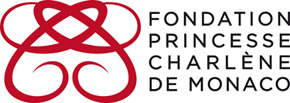
Since its inception the Christmas Ball has collected more than € 650,000, through a live auction of items offered by reputable donors, for different charity associations in the Principality, proving that glamour and social responsibility go hand in hand. Since 2016 the funds have benefited the Princess Charlene of Monaco Foundation.
Launched back on December 14, 2012, the primary objective of the Princess Charlene of Monaco Foundation is to save lives by putting an end to drowning. Its mission is to raise public awareness about the dangers of water, teach children preventive measures and teach them to swim.
The World Health Organization estimated that 360,000 people drowned worldwide in 2015 (*):
More than 40 fatalities every hour
More than half the victims are under the age of 25
Children under the age of 5 are the most affected
(*) Reproduced with the publisher’s permission – Fact Sheet N°347, May 2017, published by the World Health Organization – http://www.who.int/mediacentre/factsheets/fs347/en/
It is important to note, that even when a drowning is non-fatal, often the victim is left with severe repercussions, in particular neurological. A number of “Learn to Swim” and “Water Safety” programs have been implemented around the world in order to fight against drowning.
The Foundation’s actions are also based on the values of sport such as discipline, self-respect and respect for others, determination and team spirit. The “Sport and Education” program uses sporting activities as tools to contribute to the wellbeing and development for all children no matter their origin or circumstances.
Since the Foundation’s inception more than 590,000 people, mainly children, have benefited from those three programs in 34 countries**.
(**) Australia, Bangladesh, Burkina Faso, Canada, Chile, Dominican Republic, Fiji, France, Gabon, Ghana, Greece, India, Indonesia, Japan, Kenya, Macedonia, Madagascar, Malaysia, Monaco, Morocco, Nepal, Nicaragua, Peru, Philippines, Senegal, Serbia, South Africa, Sudan, Tanzania, Thailand, Turkey, U.S.A., Vietnam and Zimbabwe.
Space for the Ball is limited, reserve now!
Participation is limited, so if you want to be among the privileged guests at the Christmas Ball, please contact Five Stars Events at Tel.: +377 9770 7875 or by email to [email protected]
Today’s Quote
“Training and competing in the water taught me the importance of discipline, respect for oneself and others, team spirit and dedication. Most significantly, I saw how learning to swim could not only change lives, as it did mine, but also save lives.” HSH Princess Charlene of Monaco
The Christmas Ball brings the allure of the Dolce Vita to Monte-Carlo on December 14, 2019 Ball returns to the splendid Salle Empire The mythical Salle Empire of the Hotel de Paris, in the heart of Monte-Carlo, will host the 14th edition of the glamorous Christmas Ball, on Saturday, December 14, 2019, organized by Sandrine Knoell-Garbagnati of…
#Bal de Noel Monte-Carlo#Christmas Ball Monte-Carlo#Fondation Princess Charlene de Monaco#HSH Princess Charlene of Monaco#Lady Monika Bacardi#Sandrine Knoell-Garbagnati
0 notes
Photo


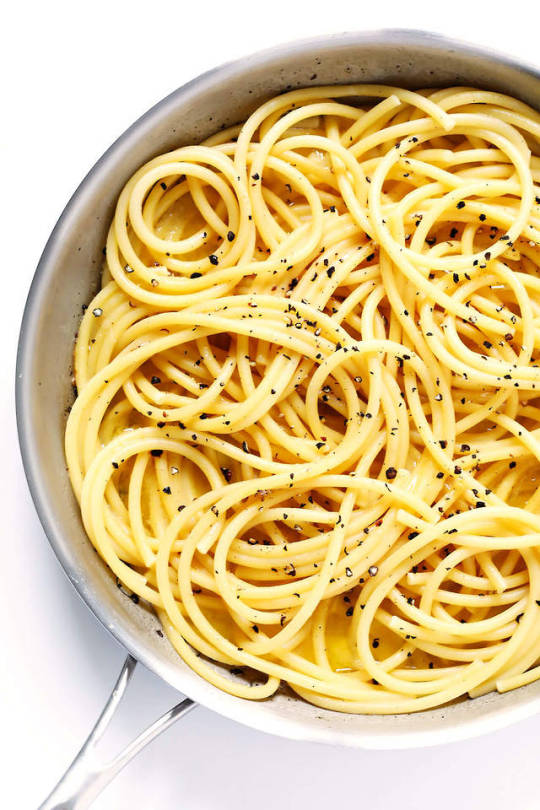

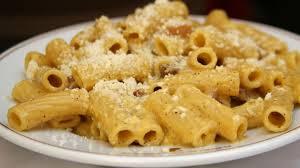




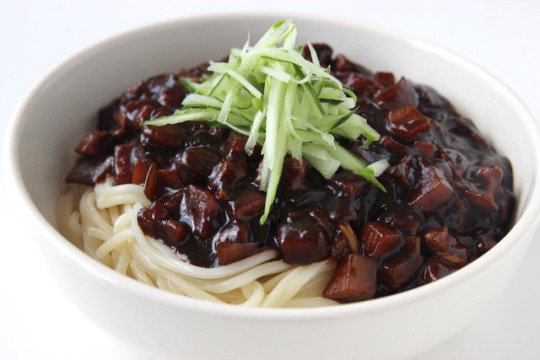
The Twisted History of Pasta
“During the 20th century, Americans developed a love affair with pasta. On the big screen, spaghetti played memorable roles in classic films such as the Marx Brothers’ Night at the Opera (1935), Disney’s Lady and the Tramp (1955), and Goodfellas (1990).”

“Pasta’s ethnic roots have been long debated. Many theories have been put forward, some notably far-fetched. An enduring myth, based on the writings of the 13th-century explorer Marco Polo, that pasta was brought to Italy from China, rose from a misinterpretation of a famous passage in Polo’s Travels...Even while Polo was away on his travels in the 1270s, there is a reference to a soldier in the northern Italian city of Genoa, who owned a basket of “macaronis.” A century before, the Muslim geographer al-Idrisi wrote of seeing pasta produced on Sicily.
Many Italian writers have argued that a tomb from the fourth century B.C. bears a relief of pasta-making equipment, suggesting the dish was being enjoyed in pre-Roman Italy...From the 13th century, references to pasta dishes—macaroni, ravioli, gnocchi, vermicelli—crop up with increasing frequency across the Italian Peninsula.”
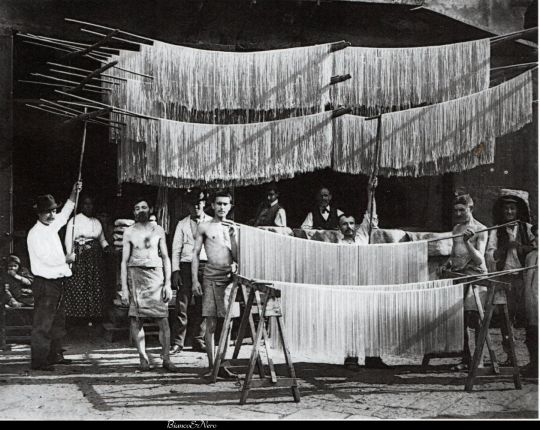
”Pasta was considered a dish for the wealthy, taking pride of place in aristocratic banquets during the Renaissance...in the middle of the 16th century...Pasta, by the late 17th century in Naples, was becoming the main staple of the common diet. Neapolitans had been nicknamed leaf-eaters (mangiafoglia) in the 1500s. From the 1700s they started to be called macaroni-eaters (mangiamaccheroni) instead...the main reason for pasta’s dramatic spread was that, from the 17th century, industrial pasta production was developed with the use of machines such as the torchio, a mechanical press to make noodles or vermicelli.”

“Several things that have changed drastically over time are the flavorings added to pasta. Sweetness has been replaced by savory, sugar swapped out for vegetables, which helped make pasta a nutritionally complete dish. Then, at the beginning of the 19th century, tomatoes were added. For a long time Italians considered them to be too exotic. In fact, it is not until 1844 that the first recipe appears for the most common pasta dish today: spaghetti in tomato sauce.”
(via The Twisted History of Pasta | National Geographic)

Tracing the Origins of the Noodle
“Noodles are eaten as pho in Vietnam, chow-chow in Nepal, seviyan in India and many other permutations and combinations throughout the globe. While the popularity of noodles is a widely accepted consensus, its origin is still a prominently debated subject. There are numerous contenders who have claimed to be the creators of the Noodle. Italians profess that they are the pioneers of this plant based food, whereas the Chinese argue that they invented this culinary sensation.
Pasta is an integral part of the Italian diet and culture. With shapes ranging from small pinwheels to large sheets, its diversity can be witnessed across the regions of this unified country. Each Italian province has its own rich history with pasta, shaped by its geographical limits and foreign influences, and as a result unique dishes native to these expanses have become a beacon for their identities. The emergence of Pasta in Italy was formerly attributed to Marco Polo, a venetian explorer. He voyaged to China, and upon his return in 1295, he brought back copious amounts of spices and other discoveries which included noodles.”
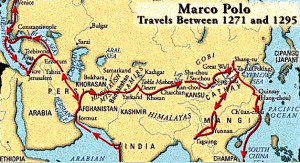
‘Well, Marco Polo might have done amazing things on his journeys, but bringing pasta to Italy was not one of them: noodles were already there in Polo’s time.’(Demeteri, 2018)
[P]asta already existed during the Roman-Etruscan era as ‘Lagane’... Apicius...was a Roman author, who discussed a recipe of ‘laganon’ in his discourse published in the first century AD. These written accounts date back thousands of years. Pasta has thus been a component of the Italian diet for centuries.”

“Arabs played a role in the development and spread of boiled noodles or ‘itriyah’. They significantly influenced Italian food and culinary practices when they invaded the country in the 8thCentury AD. Their cuisine and culture was adopted in regions such as Sicily, where the spread of sweet and savory foods such as pasta con la sarde was observed after the Arabic conquest. Macaroni too, gained widespread admiration amongst the Sicilians at this time.”

“Ramen is not only a culinary phenomenon here; it is a cultural marvel as well. Japan has museums dedicated to this fast-food, ramen stalls throughout the country, and television cooking shows fashioned around this spicy broth with noodles. The widespread consumption of Ramen by the residents of Japan is unparalleled by any other people. These facts beg the question ‘who are the ancestors of these instant noodles’ ‘was there a Japanese predecessor to this curried noodle dish’. On further research it becomes clear that ramen was introduced to Japan in the form of noodles, from China...Ramen, in present day, has become a national staple food in post-war Japan. Even though noodles weren’t devised here, they have become a vital part of the country’s national identity and the favorite grub of its people.”
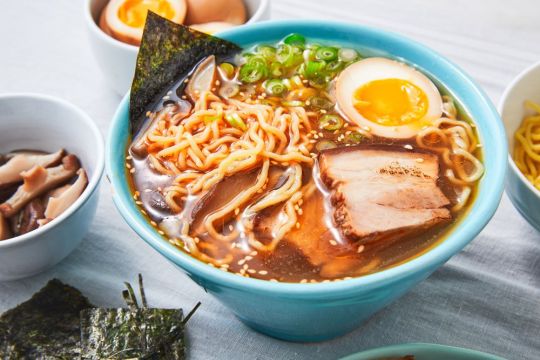
“[T]he most plausible birthplace of the noodle is China...However, even though China maybe the site of the first instances of noodles and they may have introduced some countries like Japan and India to them, this doesn’t necessarily mean that they were the ones who introduced the rest of the world to it. Italians were enjoying pasta long before Marco Polo brought back the secrets of the Chinese noodle trade. As there is very little documented data and only a few preserved artifacts related to Italian pasta, it’s not right to make any broad claims about its beginning. It is also plausible that pasta developed spontaneously in China and Italy at different time periods.”
(via Tracing the Origins of the Noodle | Noodles On The Silk Road blog)

Andō Momofuku: An Inventor Who Used His Noodle to Change Global Food Culture
“ Instant ramen: just add hot water and you have a meal in a few minutes, anytime, anywhere. The product had its beginnings with Chicken Ramen by Nissin Foods, invented by Andō Momofuku in a backyard workshop.
Andō Momofuku (1910–2007) was rightly known as “Mr. Noodles.” His instant noodles, invented in 1958 [48 years old], record yearly sales of 5.5 billion units in Japan alone; worldwide, nearly 100 billion portions are consumed every year, truly making the product a “global food.” Nissin Food Products, the company Andō founded, is part of the Nissin Group, which has grown into a giant with net sales of more than ¥490 billion in the fiscal year ending March 2017.
But before success came many trials. Andō was an up-and-coming industrialist who lost all his wealth overnight. By the time he invented Chicken Ramen, the world’s first instant ramen, he was already 48 years old.”

“Andō left these words: “In life, it’s never too late. It took me forty-eight years to invent this product.”
The idea for instant ramen came to Andō at a black market near Osaka’s main train station during the years of severe food shortages following the war. Under a cold winter sky, he saw a long line of people lined up waiting their turn to eat a bowl of ramen...A few years later, when he did not know where his own next meal was coming from, he recalled that scene and decided to try developing ramen that was simple to make and easy to eat, in addition to keeping well.
[Ando] came up with the flash-frying method, frying the noodles briefly to eliminate moisture. Andō’s hometown of Tainan is known for yi-mian, a type of noodle that is deep-fried before boiling...Andō got the idea from his wife Masako’s tempura. Seeing how she prepared crispy tempura by frying it in a way that drove out excess moisture, he hit on the notion of flash-frying his noodles.”
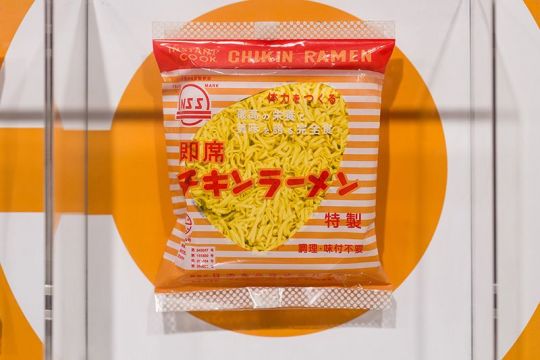
“Thanks to Andō’s experimentation, Chicken Ramen, the world’s first instant ramen, went on sale in August 1958. The noodles are permeated with a concentrated soup consisting of chicken stock and seasonings; simply adding hot water produces a steaming bowl of ramen. Called mahō no rāmen, “magic ramen,” when it first went on the market, Chicken Ramen became a runaway hit.
When Andō first told Masako that he was going into the ramen business, she reportedly said: “If you’re going to do that, make sure you become Japan’s best ramen maker.” Her admonition came true, as Andō watched yearly sales of his Chicken Ramen reach ¥4.3 billion just five years later.”

(via Andō Momofuku: An Inventor Who Used His Noodle to Change Global Food Culture | Nippon.com)

Great Tomato Substitutes for Everyday Cooking
Whether you have an allergy, sensitivity, or intolerance to them as I do, or you simply don't have tomatoes on hand, here are some great substitutes for tomato sauce, crushed tomatoes, and more that you can use in your everyday cooking.
In my effort to both eat foods that taste tomato-like and also save my health, I accidentally found the tastiest substitute in a product that is pre-made, called Marco Polo Ajvar,”

”This is actually a red bell pepper and eggplant spread that has an uncanny similarity to the texture and taste of tomato sauce. The ingredients in this Ajvar are: peppers, eggplant, sunflower oil, salt, sugar, distilled vinegar, and garlic. The product is imported from Bulgaria, which is one of the reasons the ingredients are very wholesome...This product is highly suited for people with allergies and intolerances to tomato. I'm a little addicted to this stuff myself. People you serve this sauce to might not even know it isn't tomato sauce. That is how close the flavor is.”

“If you are on the market for a barbecue sauce without tomatoes, try one that is mustard-based...This sauce is from a South Carolina recipe that's been perfected over four generations. Common ingredients in mustard-based sauces include molasses and vinegar and a great blend of herbs and spices. You will not miss the tomatoes at all, and your guests and family will enjoy this as well.”
(via Great Tomato Substitutes for Everyday Cooking | Delishably)

Filipino spaghetti
“Filipino spaghetti, also known as sweet spaghetti, is a Filipino adaptation of the Italian spaghetti with Bolognese sauce. It has a distinctively sweet sauce, usually made from tomato sauce sweetened with brown sugar or banana ketchup. It is typically topped with sliced hotdogs or smokedlongganisa sausages, giniling (ground meat), and grated cheese. It is regarded as a comfort food in Philippine cuisine.
The dish is believed to date back to the period between the 1940s and the 1960s. During the American Commonwealth Period, a shortage of tomato supplies in the Second World War forced the local development of the banana ketchup. Spaghetti with Bolognese sauce was introduced by the Americans and was tweaked to suit the local Filipino predilection for sweet dishes.”
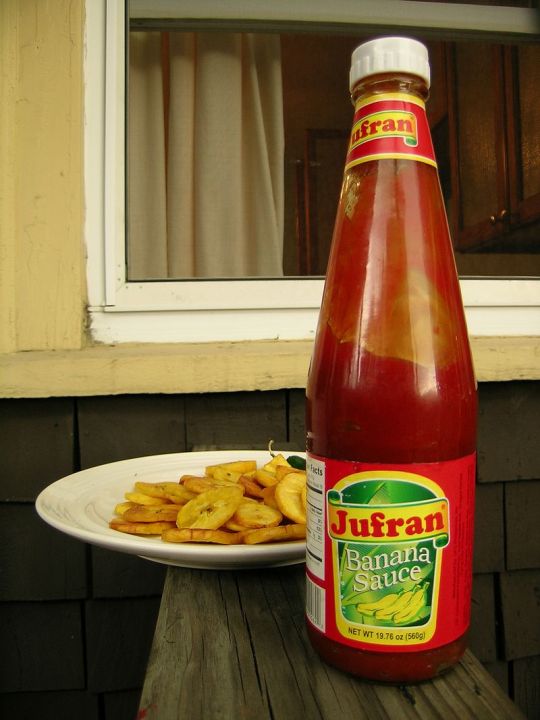
Banana ketchup
Banana ketchup or banana sauce is a popular Philippine fruit ketchup condiment made from mashed banana, sugar, vinegar, and spices. Its natural color is brownish-yellow, but it is often dyed red to resemble tomato ketchup. Banana ketchup was made when there was a shortage of tomato ketchup during World War II, due to lack of tomatoes and a comparatively high production of bananas.”

Jajangmyeon
“Jajangmyeon or jjajangmyeon is a Chinese Korean noodle dish topped with a thick sauce made of chunjang, diced pork, and vegetables.
Jajangmyeon dates back to 1905, when it was introduced in Gonghwachun, a Chinese restaurant in Incheon Chinatown run by an immigrant from the Shandong Province of China. The restaurant is now the Jjajangmyeon Museum.
In the mid-50s in South Korea, soon after the Korean War, jajangmyeon was sold at low prices so that anyone could eat it without burden. The new Korean-style Jajangmyeon began to gain explosive popularity among the many merchants visiting the port of Incheon, which was the center of trade, and the many dock workers working in the fish market, and quickly spread throughout the country.“
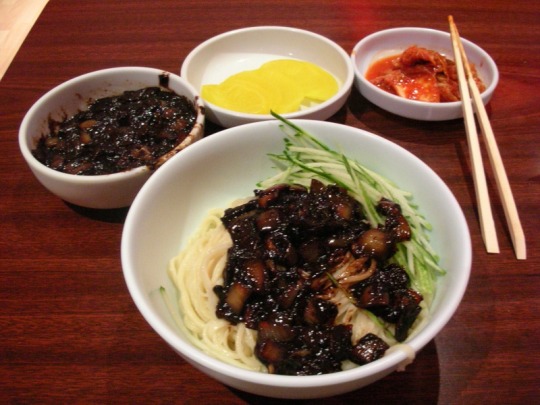
Can My Dog Eat Pasta?
“The answer is maybe. In its plain form, pasta is unlikely to harm your dog, especially in moderation. However, it is worth being careful, as some pets have wheat allergies or are sensitive to grains. Pasta has very minimal nutritional value as well, so while it isn’t poisonous, it shouldn’t be a regular part of your dog’s diet.
Oh, and avoid the sauce. Onions and garlic are toxic to dogs, so pasta sauce can make your dog sick.”

Can my dog eat spaghetti?
Only plain! If the spaghetti is in sauce, most sauces contain onions and garlic, which are toxic to dogs so avoid them completely to be safe. That’s not to mention that most spaghetti sauces include sugar and salt at problematic levels for dogs.
Can my dog eat ramen?
Nothing quite like a salty, meaty, bowl of hot ramen. Unfortunately, both traditional ramen and instant ramen are too salty for your dog to enjoy. If you’re feeding your dog plain ramen noodles, those are usually fine, but again, offer no nutritional value...It’s also good to note that onion and garlic are both popular ingredients in instant ramen flavor packets, so sharing noodles from your bowl isn’t a great idea for your dog.”
(via Can My Dog Eat Pasta? | Rover.com)

#pasta#spaghetti#macaroni#laganon#noodles#marcopolo#pho#chowchow#chowmein#ramen#andomomofuku#nissinfoods#filipinospaghetti#bananaketchup#blackbeansauce#jajangmein#firstdatedinner#tomatofree#mealideas#dogscaneatplainpasta
0 notes
Text
Hemp - Varieties of Products for Fashion and Beauty
Hemp is a considerably better option for your clothing not just because it a new fashion trend that is growing globally but it has its own benefits to the wearer and to the environment we live in. If you know someone who is Eco-conscious then you are sure to find his/her choice over clothing are dominated by hemp than any other fabric like cotton or silk. Hemp is a rotating crop and that when planted requires no use of pesticides and is a biodegradable that promises easy decomposition to keep pollution free environment.
With all being said, let us see what type of clothing item can a hemp turn into to suit your choice of fashion and uniqueness.
Hemp Shirts - You can find varieties of shirts made up of hemp. Whether you are looking for formal or informal shirts hemp can be one best option for both summer and winter because hemp garments come with both cotton and woollen qualities to keep you cool in the summer and warm in the winter. Hemp shirts are strong yet very light to wear that comes with different colours and can be ironed as well.
Hemp Bags - Hemp bags are super light to carry yet very strong to hold your belonging. It looks unique and completely Eco-friendly compared to stereotype. If you are looking for hemp bags then there are many choices you can make because they are available in different shape and sizes, for example, Hemp Backpack, laptop bags, cross body bags, bump bags, etc. for both men and women.

Hemp Footwear - Another better choice for environment-friendly footwear’s is the one made up of hemp. You can find quality shoes and flip-flops purely woven from the hemp and amazingly they are recyclable too. Hemp footwear are comfortable to use as they are soft to the skin and strong enough to go along for years. Shoes and slippers made out of hemp are available of different colours and designs giving you a wide range of choice for your organic buy.
Yoga Mat - People who are in the journey of yogic life or someone who just practices yoga for health benefits, a yoga mat is a must kit. These mats made up of hemp are soft to your body yet holds firm stability for perfect balance. Hemp is considered to hold an earthly aura so is believed to help you in your yogic goal. A yoga mat can also be used as a meditation mat, general stretching and body workouts.

Hemp Accessories – Beside above products you still can find many hemp accessories like tie, bed sheet, ropes, wallet, cap, hat and many more. It is a fact that hemp can provide us with more than 20,000 products of our use completely yet comfortably removing inorganic products from our life. Hemp farming is popular in Asia and many hemp items are exported from Asian nations to Europe and America. If you are vegan, then hemp is the best thing you can find on earth to make your life simpler ever.
However, it is also important to bear in mind that not all hemp products are 100% hemp and environment friendly. So, it is highly suggested to do your finding before your purchase one.The best thing about using hemp products is that they help you protect from harmful UV rays and are non-allergic to skin.
Pasal.Co.Uk is an online shopping store having wide variety of Nepali products with good quality and unique design. We started with a major aim to make easy and hassle free availability of the Nepali products to UK along with the desire to carry the pride of Nepal and Nepalese products. We offer good range of truly handmade products that fits for decoration, gift and various other daily uses at reasonable price.
0 notes
Text
AYA Analytica financial health memo January 2019
As of January 2019, this regular podcast is available on our Andy Yeh Alpha fintech network platform.
U.S. government shuts down again because House Democrats refuse to spend $5 billion on the border wall. U.S. government shuts down again because House Democrats refuse to spend $5 billion on the border wall that would give President Trump victory on his best-known policy. No other OECD democracy experiences abrupt government shutdowns. Should the current U.S. government shutdown be about policy differences, House Democrats would be able to achieve a compromise deal with the Trump administration. However, this congressional standoff is about presidential authority. President Trump must win this battle; otherwise, he would allow House Democrats to constrain his presidential power. A major concern is that President Trump may use his national emergency power to build the southern steel border wall. In this worse-case scenario, the eventual degradation of good government may continue. In reality, the current U.S. government shutdown happens not because America is in turmoil: the country is not at war; the economy operates near full employment; and even Fed Chair Jerome Powell praises the robust economic outlook with low inflation and high productivity growth. The current U.S. government shutdown happens because President Trump has to fulfill one of the most controversial campaign promises that his fervent followers favor. When the U.S. government reopens, Congress and the Trump administration can revisit the comprehensive issues of both border security and immigration reform without having to inflict financial pain on public employees in the specific form of furlough or work without pay.
Sino-American trade talks make positive progress over 3 consecutive days. Sino-American trade talks make positive progress over 3 consecutive days as S&P 500 and non-U.S. stock market indices post 3-day win streaks. Asian and European stock markets reap sharp gains primarily due to cautious optimism over the results of complete trade negotiations between China and America. In this light, stock market analysts view these trade talks as serious and productive because these talks extend to the third day with some concrete trade war resolution. The 3-day trade negotiations between mid-level Sino-U.S. senior reps end on a positive note and also help clear the way for subsequent higher-level trade talks. All of these joint effects aim to avert a major escalation of the Sino-U.S. trade war in early-March 0219. The Xi administration pledges to buy more U.S. goods and further seeks to improve the best practices on Chinese intellectual property protection. These trade talks can help reduce the Sino-American trade deficit by a substantial dollar amount. The Trump administration emphasizes the clear intention to ensure Chinese compliance with *continual verification and effective enforcement*. Meanwhile, the Trump administration continues to restrict Chinese investments in critical technology transfers from U.S. tech titans such as Apple, Amazon, Google, Intel, Microsoft, Nvidia, and Qualcomm etc.
Americans continue to keep their financial New Year resolutions. Americans continue to keep their financial New Year resolutions. First, Americans should save more money. Everyone needs a budget to ensure that regular paychecks outweigh cash expenses. Second, Americans need extra money to pay off credit card debt. More than 44 million Americans take on second gigs to help eliminate credit card debt (about $16,000 per capita). Third, Americans should spend less. Millennials need to reduce disproportionate expenditures on utility and leisure. Fourth, U.S. workers below 50-years-old can save $18,500 per year toward their 401(k) retirement accounts. Socking away $300 per month for 30 years can accumulate $285,000 with a conservative 6% average annual return. Fifth, Americans need to build their own emergency funds. About 57% of U.S. adults have less than $1,000 in their bank accounts, and 39% have no emergency funds at all. Americans should aim to achieve these New Year resolutions for better financial freedom. Fed Chair Jerome Powell suggests that FOMC members need to be *patient to wait-and-watch* before they hike the interest rate again. The U.S. central bank continues to cash in public debt-near-maturity to attain a substantially smaller balance sheet. Stock market analysts foresee the next interest rate hike around mid-2019 as Federal Reserve governors raise their dovish tones.
With majority control, House Democrats pass 2 bills to reopen the U.S. government without funding the Trump border wall. With majority control, House Democrats pass 2 bills to reopen the U.S. government without funding the Trump border wall. President Trump makes a surprise White House appearance to reiterate his intention to keep up the fight for the signature campaign promise of a southern border wall against Mexico. House Speaker Nancy Pelosi states that both President Trump and Republican Senate should take yes for an answer to approve the 2 bills without border wall finance. If President Trump and Republican Senate pass these bills, federal agencies would receive public finance to end the partial government shutdown. Several House Republicans break with the Trump administration and vote in favor of reopening the U.S. government without any border wall tax. It is unlikely for President Trump and Republican Senate to accept this outcome without any form of border wall finance. However, the Trump administration may need to realign stock market investor and taxpayer expectations with less than $5 billion public finance for the southern border wall. In the ultimate best-case scenario, both parties need to compromise on this public finance issue. Otherwise President Trump, Republican Senate, and House Democrats would bear responsibility for public outrage in light of the current government shutdown.
The Economist Intelligence Unit (EIU) continues to track major business risks in light of volatile stock markets. The Economist Intelligence Unit (EIU) continues to track major business risks in light of volatile stock markets, elections, and geopolitics. EIU monitors geopolitical uncertainty and market-and-credit risks in 180 countries. At the global level, EIU describes several persistent business risks. These risks include the Sino-U.S. trade war, oil supply contraction, and macrofinancial contagion from Turkey and Argentina. As the Sino-U.S. trade talks take place at the deputy secretary level, stock market indices from Dow Jones to NASDAQ and S&P500 show hefty gains 3%-5% in early-January 2019. Stock market investors hope these deputy dialogues to reach some form of compromise for better Sino-U.S. trade war resolution. Also, oil prices are likely to surge when OPEC countries cut their current oil supply. This oil price hike can cause inflationary concerns in most OECD countries. Several emerging-economies may suffer near-term stock market gyrations due to oil supply contraction and financial contagion from Turkey and Argentina. The latest EIU report sheds fresh light on the biggest business risks as of early-January 2019: Trump economic sanctions on Iran, social unrest in in Nicaragua, and corruption and tax policy uncertainty in Lithuania. In contrast, Nepal and Egypt receive lower risk scores due to political stability, macroeconomic momentum, and gradual currency devaluation.
The recent Bristol-Myers Squibb acquisition of American Celgene is the $90 billion biggest biotech deal in history. The recent Bristol-Myers Squibb acquisition of American Celgene is the $90 billion biggest biotech deal in history. The resultant biopharma goliath would become an oncology powerhouse with $8 billion blockbuster medications. Celgene share price surges 21% as Bristol-Myers Squibb (BMS) announces this acquisition. When the deal closes, Celgene shareholders would receive one BMS share, $50 in cash for each Celgene share, and one tradeable contingent value right for each share of Celgene. This contingent value right entitles its holder to receive a one-time potential payment of $9 in cash upon FDA approval of all 3 key medications of ozanimod (31 December 2020), liso-cel (31 December 2020) and bb2121 (31 March 2021). BMS already owns a rich portfolio of blockbuster medications. These medications include the top-selling PD-1 checkpoint inhibitor Opdivo, the leukemia drug Sprycel, the melanoma drug Yervoy, the multiple-myeloma drugs Revlimid and Pomalyst, and the pancreatic cancer medicine Abraxane. These medications generate about $5.9 billion revenue in 2018Q3. These landmark medications position BMS as the market-share leader in immune-oncology and hematology. The BMS specialty market niche and patent portfolio collectively create competitive moats for the new biopharma goliath in comparison to Johnson & Johnson, Merck, Pfizer, Roche, and Novartis etc.
Apple revises down its global sales revenue estimate to $83 billion due to subpar smartphone sales in China. Apple revises down its global revenue estimate to $83-$85 billion due to subpar smartphone sales in China. Apple CEO Tim Cook points out the fact that he cannot blame external factors for selling fewer iPhones during the holiday quarter. However, Apple fails to acknowledge the real possibility that the current iPhone prices may be too high. Apple iPhone prices are about 5 times higher than the average non-iOS smartphones sold by HuaWei, Oppo, and Vivo. The high-end smartphone market may be fully mature with longer replacement cycles. This tech trend poses a major long-term challenge to Apple. There are at least 3 solutions to weaker global demand for Apple iPhones. First, Apple can broaden the scope of short-term programs for renting pricey iPhones. These rental programs can help transform high-end Apple iPhones into more affordable options. Second, Apple can consider introducing new media services in addition to Apple Music. Apple can apply the profitable business models of iTunes and App Store to real-time video streams, games, and other entertainment outlets. Third, Apple can take advantage of offshore cash repatriation to fund new acquisitions of media service providers. These solutions accord with the prior Apple business goal of growing media services to quadruple their sales and profits.
Federal Reserve normalizes the current interest rate hike to signal its own independence from the White House. President Trump forces the Federal Reserve to normalize the current interest rate hike to signal its own independence from the White House. There are at least 3 root causes of the current neutral interest rate hike. First, the real interest rate is remarkably low around the zero lower bound when the CPI inflation rate is about 2.2% and the U.S. federal funds rate lands in the target range of 2%-2.25%. This near-zero real interest rate can cause serious problems. For instance, firms respond to the low cost of capital by taking on excessive private debt. Banks reach for higher yields by lending to high-risk borrowers with some deterioration in credit standards. Institutional investors can lever up to boost stock market prices to unsustainably high levels. The government tends to run fiscal deficits because the debt-servicing cost is relatively low. These credit supply changes can sow the seeds of the next economic recession.
Second, the Federal Open Market Committee (FOMC) can normalize the current interest rate hike such that the U.S. central bank gains greater instrumental bandwidth to deal with the next financial downturn. At subsequent stages of the real business cycle, the FOMC can apply gradual downward interest rate adjustments as the neutral interest rate allows the U.S. economy to operate near full employment with inflation containment. The current U.S. unemployment is 3.7%, and the FOMC expects the long-term sustainable unemployment rate to be about 4.4%. In the rosy picture of 3%-3.5% real GDP economic growth, the FOMC has to gradually introduce interest rate increases to prevent 2.2% CPI inflation from becoming a major economic disturbance. In light of one rate increase per quarter throughout 2018, the FOMC expects to raise the interest rate twice in 2019.
Third, the Federal Reserve now needs to normalize the current interest rate hike to signal its own independence from the White House. International evidence shows that monetary policy independence helps better curb inflation with steady gains in real GDP growth, productivity, capital investment, and domestic employment. Fed Chair Jerome Powell needs to continue interest rate increases to achieve a reasonable New Keynesian trade-off between inflation and unemployment (although he receives several criticisms from President Trump in recent times). Overall, the Federal Reserve has to maintain the current hawkish monetary policy pace in response to several economic headwinds from Trump tax cuts and tariffs to higher public expenditures and health care costs.
Neoliberal public choice continues to spin national taxation and several other forms of government intervention. Neoliberal public choice continues to spin national taxation and several other forms of government intervention. The post-crisis consensus focuses on government intervention as the root cause of socioeconomic malaise in several OECD countries. Ideology continues to inform public policy, and neoliberalism specifically advocates a minimal role for the state in economic affairs such as taxation, health care, infrastructure, and immigration. Neoliberal public choice emphasizes regulatory failures rather than historical country-specific experiences. The sheer predominance of utilitarian myopia reflects fundamental misconceptions about the proper economic role of government. Contrary to the post-crisis consensus, active strategic public-sector investment is critical to both economic revival and financial stability. The state should act as an investor of first resort, rather than a lender of last resort, for great technological advances and revolutions in finance, energy, transport, medicine, and information communication. The government can indeed learn much from the best business minds of Warren Buffet and George Soros in finance, Elon Musk in energy and autonomous transport, Peter Diamandis and James Brewer in medicine and health care, and Steve Jobs, Tim Cook, Bill Gates, Larry Page, and Jeff Bezos in information communication technology. Effective capitalism calls for facilitative state involvement in economic governance and regulation.
President Trump signs an executive order to freeze federal employee pay in early-2019. President Trump issues an executive order to freeze federal employee pay in early-2019. U.S. federal employees face furlough or work without pay due to the partial government shutdown. President Trump further pours salt into the wound by signing an executive order that freezes federal pay for about 2 million public employees in early-2019. In effect, this executive order cancels the 2.1% pay increase for 2 million non-military federal workers, whereas, the same order cannot affect the 2.6% pay increase for military servants and soldiers. This strategic move expands the prior Trump claim that he *would be proud to shut down the government for better border security*. Specifically, President Trump demands $5 billion public finance for the southern border wall. The wall can improve the domestic quality of health care, education, and other public services for U.S. residents. The $5 billion border wall tax thus becomes essential for overall domestic welfare in America. On the other side of the same story, however, this executive order serves as a key Trump tactic that tilts Congress toward political compromise. The negotiation contributes to the Trump presidential campaign promise of better border security although most Americans blame President Trump for the recent government shutdown.
Reuters polls show that most Americans blame President Trump for the recent U.S. government shutdown. Reuters polls show that most Americans blame President Trump for the recent U.S. government shutdown. President Trump remains adamant about having to shut down the U.S. government in order to acquire at least $5 billion public finance for the southern border wall. This border wall tax helps fulfill one of his presidential campaign promises on U.S. immigration, which has long been a major source of diverse vitality for the American dream. The Trump intransigence is illustrative of his broader political philosophy, which often hinges on performing for the Republican base (rather than gauging the popular mood of the whole country). The rapid rise of President Donald Trump has been the natural result of his inclination toward political tribalism. This tribalism often leads Trump to design policies in a consistent way that places his political prospects squarely on the fervent loyalty of fellow Republicans. After losing House majority control to Democrats in the November 2018 midterm elections, President Trump entrenches himself and mocks the moderate Republican losers instead of expressing contrition or pledging to collaborate with Democrats. The same strategy works wonders for President Trump as 75% of Republicans favor building the border wall despite declining approval in the general polls.
Chinese President Xi JingPing calls President Trump to reach Sino-American trade conflict resolution. Chinese President Xi calls President Trump to reach Sino-U.S. trade war resolution. Xi sends a congratulatory message to mark 40 years since the progressive normalization of diplomatic relations between China and America. Cooperation is the best choice for both sides in light of bilateral trade history. As Xi politely urges the Trump administration to compromise on the current bilateral trade standoff, Xi attempts to avert the unilateral U.S. imposition of hefty tariffs on Chinese goods. This reconciliatory gesture serves as a mild response to the prior Trump trade battle plan of raising 10%-to-25% tariffs on $200+ million Chinese goods. Trump tariffs harm the Chinese economy because the Shanghai-and-Shenzhen composite stock market indices plunge double-digits with subpar 6.5% real GDP economic growth in 2018. During the current 90-day trade truce, both teams hope to reach an eventual trade agreement that would benefit both countries as early as possible. The presidents express their goodwill to implement Sino-U.S. trade concessions made on the G20 summit sidelines in 2018Q4. As U.S. trade rep Robert Lighthizer characterizes the risks of allowing China to join the World Trade Organization, trade alone cannot douse the flames of international rivalry, whereas, economic prosperity often contributes to bilateral conflict.
American parents often worry about money and upward mobility for their children. American parents worry about money and upward mobility for their children. A recent New York Times survey suggests that nowadays American parents spend more time, effort, and money raising their kids. Merrill Lynch reports that the average cost of raising a child to 18 years old tops $230,000. The same report also suggests that 79% of American parents continue to provide financial support to their adult children. Costs for food, school, transportation, technology, entertainment, and other activities typically increase as children grow older. Also, 69% of parents admit to feeling pressure and even anxiety to give their children what their peers have. There is a key element of competition, peer pressure, or *keeping up with the Joneses* that entices parents to spend more money on their children. Economic prosperity motivates these parents to help ensure that their children are financially better off than the previous generations. A recent empirical study by the Federal Reserve Bank of St Louis demonstrates that millennials face unique financial struggles. These financial struggles include higher unemployment rates, stagnant wages, less affordable residential properties, and student debt imbalances. Millennials are now at risk of becoming a *lost generation* that collectively accumulates less wealth during their lifetime.
New York Fed CEO John Williams listens to sharp share price declines as part of the data-dependent interest rate policy. New York Fed CEO John Williams listens to sharp share price declines as part of the data-dependent interest rate policy. The Federal Reserve can respond to stock market plunges, but most FOMC members still view the U.S. economy as sufficiently strong to grow with higher interest rates. Williams emphasizes softening the central bank language that the next 2 semi-annual rate hikes are only economic projections. The upward rate trajectory is not a matter of right-or-wrong with Wall Street, and the central bank cannot be on autopilot at this stage of the current macro business cycle. Williams expects U.S. GDP to slow to 2%-2.5% in 2019 (from 3%-3.5% in 2018), whereas, inflation should be around 2% in 2019. Trump tariffs continue to pose a major tone of economic policy uncertainty. Treasury Secretary Steven Mnuchin assuages bank CEOs and stock market investors that the Trump administration has no power to oust Fed Chair Jay Powell for his recent interest rate hike. Mnuchin consults the Federal Reserve and Securities and Exchange Commission on the recent partial government shutdown and stock market turmoil. This stock market plunge protection team receives reassurance from banks that there is ample liquidity for lending to both consumers and firms.
American allies assist AT&T and Verizon in implementing 5G telecommunication technology. American allies assist AT&T and Verizon in implementing 5G telecommunication technology in the U.S. as these allies ban the use of HuaWei 5G tech equipment. This assistance arises as an equilibrium outcome several weeks after the arrest of HuaWei CFO in Canada amid a U.S. probe into whether the Chinese tech titan violates U.S. economic sanctions on Iran. The U.S. federal government undertakes multiple measures to curb the influence of HuaWei and its fellow Chinese telecom firm ZTE. These measures ban the HuaWei and ZTE sales of 5G mobile devices on military bases. During the current 90-day trade truce with China, the Trump administration remains adamant about maintaining U.S. dominance in 5G telecommunication (which is at least 10 times faster than the 4G telecom standard). National Economic Council chief economic advisor Larry Kudlow emphasizes the fact that 5G telecommunication technology is the top priority for national economic security. These landmark events echo the recent Trump bans on the cross-border merger between Qualcomm and Broadcom as well as Chinese acquisitions of critical technologies in Silicon Valley. Apple and Samsung may or may not introduce their 5G flagship smartphones and tablets until 5G telecom proliferation reaches a critical mass before mid-2020.
Andy Yeh Alpha (AYA) AYA Analytica financial health memo (FHM) podcast January 2019
AYA Analytica is our online regular podcast and newsletter about key financial news, market insights, economic issues, and stock investment strategies on our Andy Yeh Alpha (AYA) fintech network platform. With both American focus and international reach, our primary and ultimate corporate mission aims to help enhance financial literacy, inclusion, and freedom of the open and diverse global general public. We apply our unique dynamic conditional alpha investment model as the first aid for every investor with profitable asset investment signals and portfolio strategies. In fact, our AYA freemium fintech network platform curates, orchestrates, and provides proprietary software technology and algorithmic cloud service to most members who can interact with one another on our AYA fintech network platform. Multiple blogs, posts, ebooks, analytical reports, stock alpha signals, and asset omega estimates offer proprietary solutions and substantive benefits to empower each financial market investor through technology, education, and social integration. Please feel free to sign up or login to enjoy our new and unique cloud software services on AYA fintech network platform now!!
Please feel free to follow our AYA Analytica financial health memo (FHM) podcast channel on YouTube: https://www.youtube.com/channel/UCvntmnacYyCmVyQ-c_qjyyQ
Please feel free to follow our Brass Ring Facebook to learn more about the latest financial news and stock investment ideas: https://www.facebook.com/brassring2013
Free signup for stock signals: https://ayafintech.network
Mission on profitable signals: https://ayafintech.network/mission.php
Model technical descriptions: https://ayafintech.network/model.php
Blog on stock alpha signals: https://ayafintech.network/blog.php
Freemium base pricing plans: https://ayafintech.network/freemium.php
Signup for periodic updates: https://ayafintech.network/signup.php
Login for freemium benefits: https://ayafintech.network/login.php
We create each free finbuzz (or free financial buzz) as a blog post on the latest financial news and asset investment ideas. Our finbuzz collection demonstrates our unique American focus with global reach. Each free finbuzz provides deep insights into numerous topical issues in global finance, stock market investment, portfolio optimization, and dynamic asset management. We strive to help enrich the economic lives of most investors who would otherwise engage in financial data analysis with inordinate time commitment.
Please feel free to forward our finbuzz to family and friends, peers, colleagues, classmates, and others who might be keen and abuzz to learn more about asset investment strategies and modern policy reforms with macroeconomic insights.
Do you find it difficult to beat the long-term average 11% stock market return?
It took us 20+ years to design a new profitable algorithmic asset investment model and its attendant proprietary software technology with fintech patent protection in 2+ years. AYA fintech network platform serves as everyone’s first aid for his or her personal stock investment portfolio. Our proprietary software technology allows each investor to leverage fintech intelligence and information without exorbitant time commitment. Our dynamic conditional alpha analysis boosts the typical win rate from 70% to 90%+.
Our new alpha model empowers members to be a wiser stock market investor with profitable alpha signals!! This proprietary quantitative analysis applies the collective wisdom of Warren Buffett, George Soros, Carl Icahn, Mark Cuban, Tony Robbins, and Nobel Laureates in finance such as Robert Engle, Eugene Fama, Lars Hansen, Robert Lucas, Robert Merton, Edward Prescott, Thomas Sargent, William Sharpe, Robert Shiller, and Christopher Sims.
Andy Yeh Alpha (AYA) fintech network platform serves as each investor's social toolkit for profitable investment management. AYA fintech network platform helps promote better financial literacy, inclusion, and freedom of the global general public. We empower investors through technology, education, and social integration.
Andy Yeh AYA fintech network platform founder Brass Ring International Density Enterprise (BRIDE)
We should not conform to this world, but we should allow the renewal of our minds to transform us, so that we can prove what is the good, acceptable, and perfect will of God. Romans 12: 2
0 notes
Text
Basic Emergency Obstetric and Newborn Care (BEONC) Sites in Nepal
Basic emergency obstetric and newborn care (BEONC) covers the management of pregnancy complications by assisted vaginal delivery (vacuum or forceps), the manual removal of placenta, the removal of retained products of the abortion (manual vacuum aspiration), and the administration of parenteral drugs (for postpartum haemorrhage, infection and pre-eclampsia, and eclampsia) and the resuscitation of…

View On WordPress
#BEONC#BEONC Service#Health in Data#Maternal and Newborn Care#Maternal Mortality#Nepal Health Facts Sheet#Public Health
0 notes
Text
MBBS in Nepal
Studying MBBS in Nepal is an incredible destination to pursue an MBBS degree. Nepal is multi-ethnic, multi-lingual, multi-religious and multi-cultural and is located in the lap of the Himalayas. Nepal is home to mountains in fact eight of the world’s ten tallest mountains including Mount Everest, the highest point on the earth. Kathmandu is Nepal’s capital and the largest city and Nepali is the official language Nepal is the most ideal destination to study MBBS for Indian students because both countries are neighbours. The political relationship between India and Nepal is good, it adds extra benefits to students. MBBS in Nepal for Indian students is a golden opportunity due to its quality education. Also, Indian students don't need a visa document to study MBBS in Nepal. MBBS in Nepal without NEET is not possible. You need to qualify National Eligibility cum Entrance Test (NEET). Apart from this, there is no need to qualify for any extra exam like TOEFL or USMLE. MBBS in Nepal for Indian students' fee structure is affordable compared to European medical colleges. Living costs are low for international students. Nepal is a very safe country for international students. Indian students can easily come back home from Nepal for any necessary work or on vacation, all types of Transport facilities are available every day between Nepal and India like buses, trains and aeroplanes. The top medical universities in Nepal have been recognised by the different medical bodies of the world such as the National Medical Commission (NMC), World Health Organization (WHO), UNESCO, ECFMG, FAIMER, etc. Medical degrees awarded by Nepal’s medical universities are recognised globally.
Advantages of Studying MBBS in Nepal
❖ Many Indian students study various medical courses in Nepal.
❖ The admission process is hassle-free in medical colleges in Nepal, IELTS & TOEFL exams are not required for admission only students need to qualify NEET examination
❖ The cost of MBBS in Nepal is affordable, MBBS Tuition fees are low here compared to Indian private medical colleges for MBBS courses
❖ Hostel fees are reasonable and shared hostels are available on campus. Separate hostels facility is available for girls for better privacy
❖ Most of the medical colleges of Nepal are approved by top medical organizations such as NMC & WHO.
❖ Medical Universities provide globally recognised medical degrees that open several carrier options for medical graduates.
❖ Advanced research centres, well-equipped laboratories and the latest medical instruments are available for better clinical studies.
❖ Medical colleges in Nepal are known for their quality education both in theoretical studies and practical learning.
❖ Nepal shares a similar culture with India, which makes it easier for Indian students to adjust to the local culture and lifestyle. Also, the majority of the population in Nepal speaks Hindi, which is the language spoken widely in India.
❖ MBBS in Nepal is a perfect option for bright students who want to study medical education at an affordable cost without compromising on the quality of education
Eligibility Criteria for Admission to Nepal
Below have mentioned all the important details of the eligibility criteria that you must fulfil to study
❖ You should have an aggregate of 50% for General category candidates and 45% for Reserved category candidates in 12th standard with Physics, Chemistry and Biology
❖ The age should be 17.5 years at the time of admission and the maximum age limit is 25.
❖ It is compulsory for Indian students to clear the National Eligibility Cum Entrance Test (NEET-UG) exam conducted by the National Testing Agency (NTA).
❖ The student must have a valid Visa & Passport and Indian Nationality Certificate.
Documents Required
Students should keep the following list of the documents that are required to be admitted to reputed government medical colleges in Nepal:
❖ 10th mark sheet
❖ 12th mark sheet
❖ NEET Score Card
❖ 10 Passport size photos
❖ Health insurance
Top medical colleges in Nepal
Some of the top medical colleges in Nepal are mentioned below:
B. P. Koirala Institute of Health Sciences
B.P. Koirala Institute of Health Sciences was named after Bisheshwar Prasad Koirala, a famous political leader of Nepal. It is one of Nepal’s leading and most popular medical institutes. It was established in 1993 and is located in Dharan in Sunsari District, Nepal. It is placed among the top ten medical colleges in Nepal.
Kathmandu Medical College
Kathmandu Medical College is one of the oldest and top-ranked medical colleges in Nepal. It is affiliated with Kathmandu University and approved by top international & Indian medical bodies such as the National Medical Commission (NMC), World Health Organization (WHO), and many more. It was founded in 1997.
KIST Medical College
KIST Medical College is a leading medical college in Nepal. The college was established in 2006 and is located in the Lalitpur district of Nepal. It is affiliated with Tribhuvan University and recognised by National Medical Commission (NMC), World Health Organization (WHO), UNESCO, EFMG, FAIMER, etc.
Institute of Medicine
The Institute of Medicine is one of Nepal’s oldest & reputed medical institutes. It was established in 1972 in Nepal’s capital Kathmandu. It is affiliated with Tribhuvan University and is approved by top international, European and Indian medical or educational organizations. MBBS course duration is six years including an internship and the teaching medium is English at the Institute of Medicine.
Manipal College of Medical Science
SManipal College of Medical Science is affiliated with Kathmandu University. It was established in 1994 and is located in Pokhara, Nepal. The college is very popular among international students due to its excellent quality education & practical learning. Most of the medical colleges in Nepal provide globally recognised medical degrees
Curriculum and teaching methods
MBBS course duration is 6 years including a one-year rotating internship program in Nepal’s medical universities. Following is the semester-wise syllabus for MBBS at the medical Universities of Nepal: 1st Year 2nd Year 3rd Year Anatomy Haematology Neuroanatomy Physiology Immunology Neurophysiology Medical Genetics Biophysics Behavioral Medicine Biochemistry Biochemistry Pharmacology Molecular Biology Introduction to Public Health Pathology Histology & Embryology Clinical & Professional Skills III Introduction to clinical diagnostics II Cardiovascular & Respiratory Systems Endocrine Physical Diagnosis History of Medicine Renal & Reproductive Systems Clinical Skills Clinical & Professional Skills I Nanomedicine Medical Management Clinical & Professional Skills II Philosophy -- 4th Year 5th Year 6th Year Internal Medicine clerkship Internal Medicine Obstetrics/Gynecology Pulmonology Clinical Immunology Family Medicine III Nephrology Dermatology Paediatrics Urology Stomatology Narcology General Surgery Ophthalmology Clinical Practi System Biology Emergency Medicine Palliative care clerkship Hepatology Infectious Diseases -- Family Medicine Rehabilitation Medicine -- Clinical radiology Forensic Medicine -- Laboratory Medicine Medical Toxicology --
The teaching medium is English for the MBBS courses in Nepal. International students from all over the globe study various medical courses in Nepal. Teaching in English makes it easier for students to understand the syllabus of MBBS and they continue their studies well.
Clinical exposure and practical training
Clinical exposure and practical training are as important as theoretical studies. Practical training provides students with hands-on experience in various medical fields and Clinical exposure offers students a real-life situation in hospitals. In an internship, students are assigned to work alongside professional doctors & nursing staff. It helps to develop clinical skills in students. Also, it includes training in procedures such as taking a patient's history and physical examination, administering medications, interpreting lab results, and performing minor surgical procedures Clinical exposure and practical training instilled a sense of responsibility among the students. They are critical components of MBBS education that provide students with the skills and experience necessary to succeed in their future medical careers. MBBS in Nepal for Indian students is a golden opportunity if you are interested in Clinical exposure and practical training
MBBS in Nepal Fee Structure
If you want to study MBBS at a low cost without compromising on quality education, then Nepal is the best place for you. MBBS in Nepal fees is quite reasonable compared to other countries' medical colleges. In India, the cost of studying MBBS is very high. There is a lot of difficulty in getting entry into the government medical college due to limited medical seats, MBBS in Nepal for Indian students fee structure is affordable. The cost of MBBS in Nepal is approximately between 45-60 lakh
MBBS in Nepal fees in Indian rupees for Indian students:
Colleges Name Tuition Fees (Year) Hostel Fees (Year) KIST Medical College ₹ 42,00,000/- ₹ 6,00,000/- Institute of Medicine, Kathmandu ₹ 38,50,000/- ₹ 6,60,000/- B.P. Koirala Institute of Health Sciences ₹ 48,00,000/- ₹ 6,60,000/- Kathmandu University ₹ 55,00,000/- ₹ 6,00,000/- Manipal Medical Collegey ₹ 50,00,000/- ₹ 6,60,000/- Nepalgunj Medical College ₹ 60,00,000/- ₹ 6,00,000/- Birat Medical College ₹ 53,00,000/- ₹ 6,00,000/-
Scholarships and financial aid options
Though the talks of an MBBS study bring joy, hope and passion, the barriers between your MBBS dream and the reality of affording MBBS fees are high. Studying in Nepal is a top choice for international students aiming to study abroad, owing to the high-quality medical education offered. The government of Nepal are bringing bright students from across the globe to Nepal by offering various scholarships for international students to study higher education.
Accommodation and living expenses
❖ Medical colleges in Nepal provide all the necessary facilities to students
❖ The medical college has a canteen facility on campus
❖ Indian foods are easily available in Nepal, in fact, all the vegetables of India are available there.
❖ Separate hostels are available on the campuses of the university
❖ Local guardians are available in the hostels
❖ Nepal medical universities are safe for international students. Safety is one of the topmost priorities of the University and the campus is under CCTV surveillance 24*7
❖ Also, Security guards are available in the medical colleges
❖ Living cost is low in Nepal. Students can live outside the college campus in private flats or rented rooms.
❖ Library, conference hall, and well-maintained rooms are available in major medical universities of Kyrgyzstan.
❖ Seminars, cultural events and sports tournaments are organised on the campus.
Career opportunities after completing MBBS in Nepal
There are several career options for medical students pursuing MBBS from Nepal. After completing of MBBS from an eminent medical college in Nepal, here are some of the popular career options for students:
❖ Students can study PG courses like MD/MS in top countries of the world such as the USA, Germany, U.K, Canada, Russia and many more.
❖ Students can choose Hospital management as their career.
❖ Students can open their own clinics or hospitals for practice in Nepal. For getting an Indian medical licence students need to clear the National Exit Test NEXT exam.
❖ Students can practice as a doctor in a popular hospital in Nepal or any other major country.
❖ Also, Students can work as medical advisors, clinical research associates, or drug safety specialists.
❖ After completing MBBS in Nepal, students can pursue post-graduation or specialization in various medical fields such as Cardiology, Neurology, Gynecology, Dermatology, Pediatrics, Orthopedics, and many more.
Conclusion: Is studying MBBS in Nepal worth it?
In conclusion, whether studying MBBS in Nepal is worth it or not depends on your individual goals and circumstances. If you are willing to work hard and make the most of the opportunities available, then studying MBBS in Nepal could be a good choice for you. However, if you are looking for the latest medical facilities and technologies, you may want to consider studying in a different country. MBBS in Nepal's cost of education compared to other countries like Russia, Georgia, France, Italy, the US, Canada, and the UK, etc
#MBBS in Nepal#mbbs in nepal for indian students#mbbs admission in nepal for indian students#mbbs college in nepal#mbbs fee structure in nepal
0 notes
Text
Nepal Health Facts Sheet 2023
The Nepal Health Facts Sheet 2023 presents the key achievements of health programs in the fiscal year 2079/80. The report highlights key milestones, providing a condensed narrative of the progression of the health sector in Nepal. DOWNLOAD PDF FILE DOWNLOAD PDF FILE

View On WordPress
0 notes
Text
Prince Albert came to cheer the competitors
The first edition of the Princess of Monaco Cup took place at the Monte-Carlo Golf Club under beautiful blue skies on October 3, 2019, in the presence of Prince Albert II and Gareth Wittstock, General Secretary of the Princess Charlene of Monaco Foundation.
The funds raised through this solidarity sportive event sponsored by Richard Mille, will support a part of the renovation works of the Princesse Charlène de Monaco municipal swimming pool of La Turbie and a swimming program at Awutu-Winton High School in Ghana.
The ambassadors of the Princess’ Foundation, Charles Leclerc (F1) and Bjorn Maaseide (Beach Volley), were joined by other athletes as leaders of the 18 teams composed of 3 players each: José Cobos (football), David Coulthard (F1), Jérôme d’Ambrosio (Formula E), Richard Dunne (football), Mika Hakkinen (F1), Rudi Keil (rugby), Juandre Kruger (rugby), Tony Lloyd (golf), Diana Luna (golf), Caroline Mohr (golf), Percy Montgomery (rugby), Gilles Panizzi (rally), Stiliyan Petrov (football), Sophie Sandolo (golf), David Tanner (cycling), Mark Webber (F1).
Gareth Wittstock, Eddie Jordan, Prince Albert II, Charles Leclerc , Sean Wittstock @Eric Mathon:Palais Princier
Charles Leclerc (Ferrari, F1) at the Princess of Monaco Cup, Octobere 3, 2019@ Philippe Fitte/Fondation Princesse Charlene de Monaco
Caroline Mohr @Philippe Fitte/Fondation Princesse Charlene de Monaco
Tony Lloyd @Philippe Fitte/Fondation Princesse Charlene de Monaco
Mika Hakkinen @Philippe Fitte/ Fondation Princesse Charlene de Monaco
Mark Webber @Philippe Fitte/Fondation Princesse Charlene de Monaco
David Coulthard @Philippe Fitte
Let’s Scramble!
The 18 teams played on a Scramble format, an unofficial and very friendly form of the game that is not covered under the official Rules of Golf. Two or more players form a team, with the rules emphasizing fun without the pressure of players keeping individual scores. Each player hits a tee shot on each hole, but everyone plays from the spot of the best shot, subject to certain criteria. Rules for playing in a scramble are informal, with tournament organizers modifying basic rules as they wish. For example, organizers may require a group to select each player’s tee shot at least twice. Starting from of the 18 holes, each player of the team plays a ball, and the team will choose which ball is in the best position
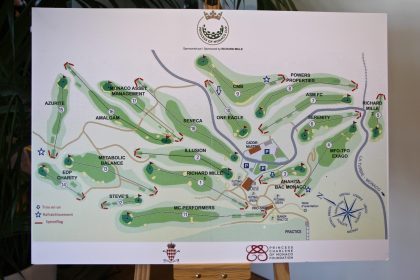
The trophy winners
The Power Properties team, led by M. David Tanner, claimed the first place on the podium. The teams Amalgam and Serenity lead by Diana Luna and Juandre Kruger, reached the second and the third place respectively.

(Photo: Eddie Jordan, David Tanner and members of Power Properties team, Michael Wittstock & Prince Albert II @Eric Mathon/Palais Princier)
The Official Draw
The official draw pairing the athletes to the sponsoring teams had been organized on Wednesday, October 2, at the Yacht Club of Monaco. Eddie Jordan, accompanied by Victoria Silvstedt, was hilarious as the super Master of Ceremonies, emphasizing the importance of this first edition of the charity golf tournament in raising funds for the different programs carried out by the Princess Charlene of Monaco Foundation. After the draw everybody was treated to a festive cocktail party.
Eddie Jordan, R. Keil, T. Lloyd, Percy Montgomery, D. Tanner, S. Petrov. Standing ( to R) R. Dunne, Diana Luna, Viictoria Silvstedt, Sophie Sandolo, Caroline Mohr, Bjorn Maaseide, Mark Webber, José Cobos, Gilles Panizzi @Eric Mathon:Palais Princier
The official Draw at the Yacht Club of Monaco, October 2, 2019 @CelinaLafuentedeLavotha
Princess of Monaco Cup Partners
The Princess Charlene of Monaco Foundation gives heartfelt thanks to its generous partners that made this event possible.

Saving lives by putting an end to drowning

Launched back on December 14, 2012, the primary objective of the Princess Charlene of Monaco Foundation is to save lives by putting an end to drowning.Its mission is to raise public awareness about the dangers of water, teach children preventive measures and teach them to swim.
The World Health Organization estimated that 360,000 people drowned worldwide in 2015 (1):
– More than 40 fatalities every hour
– More than half the victims are under the age of 25
– Children under the age of 5 are the most affected
When a drowning is non-fatal, often the victim is left with severe aftereffects, in particular neurological.
A number of “Learn to Swim” and “Water Safety” programs have been implemented around the world in order to fight against this scourge.
The Foundation’s actions are also based on the values of sport such as discipline, self-respect and respect for others, determination and team spirit.
The Sport and Education program uses sporting activities as tools to contribute to the wellbeing and development for all children no matter their origin or circumstances.
Since the Foundation’s creations more than 590,000 people, mainly children, have benefited from these three programs in 34 countries. (2)
(1) Reproduced with the publisher’s permission – Fact Sheet N°347, May 2017, published by the World Health Organization http://www.who.int/mediacentre/factsheets/fs347/en/
(2) Australia, Bangladesh, Burkina Faso, Canada, Chile, Dominican Republic, Fiji, France, Gabon, Ghana, Greece, India, Indonesia, Japan, Kenya, Macedonia, Madagascar, Malaysia, Monaco, Morocco, Nepal, Nicaragua, Peru, Philippines, Senegal, Serbia, South Africa, Sudan, Tanzania, Thailand, Turkey, U.S.A., Vietnam and Zimbabwe.
Today’s Quote
“Good actions give strength to ourselves and inspire good actions in others.” Plato
Charles Leclerc left the racetrack for the golf course for 1st edition of Princess of Monaco Cup Prince Albert came to cheer the competitors The first edition of the Princess of Monaco Cup took place at the Monte-Carlo Golf Club under beautiful blue skies on October 3, 2019, in the presence of…
#Bjorn Maaseide#Caroline Mohr#charity golf event#Charles Leclerc#David Coulthard#Eddie Jordan#HSH Princess Charlene of Monaco#Jose Cobos#Mark Webber#Mika Hakkinen#Princess of Monaco Cup#Richard Mille#The Princess Charlene of Monaco Foundation#Tony Lloyd
0 notes
Text
Health Policy 2076 | MoSD, Karnali Province- Nepal
Health Policy 2076 | MoSD, Karnali Province- Nepal
Health Policy 2076| MoSD, Karnali Province- Nepal
DOWNLOAD PDF FILE
Recommended Readings
National Health Policy 2076- MoHP
Nepal STEPS Survey 2019 Alcohol Consumption and Policy Fact Sheet
Nepal Health Sector Strategy(NHSS) Implementation Plan 2016-21
National NCD risk factor survey (WHO-STEP survey) 2019, Nepal
Term of Reference – Province Health Directorate
Term of Reference – Province…
View On WordPress
0 notes
